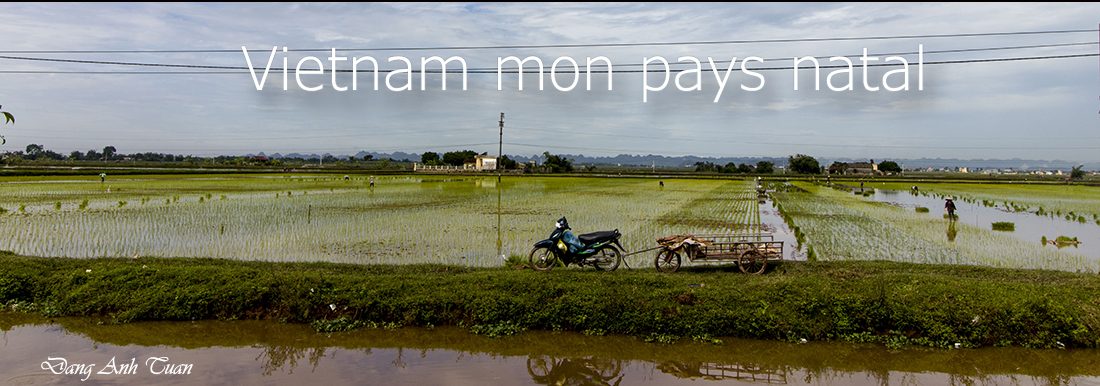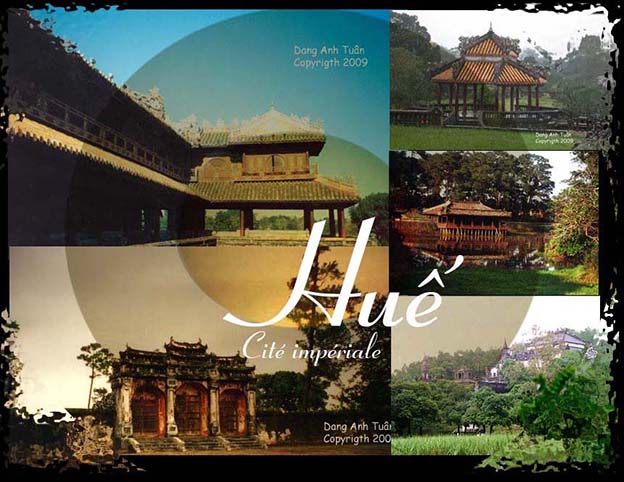For the majority of Vietnamese, Huế always remains the intellectual and artistic foyer of Vietnam. It always looks like a sleeping princess. It knows how to keep its charm and grace that it has had since the Champa occupation with its citadel, the Perfume river and above all the famous Thiên Mụ ( or The Celeste Lady ) pagoda . The cruel beauty of its women wearing the white tunic ( áo dài ) accompanied by a conical hat (or nón bài thơ) , the fineness of its poetry, the union of its parks and pagodas with varnished tiles, the culture of its madarinal court make it more charming, noble, and majestuous.
One remembers Hue through the follwing two famous popular verses:
Gió đưa cành trúc là đà
Tiếng chuông Thiên Mụ, canh gà Thọ-Xương
While the wind smootly moves the bamboo branches
One hears the Thiên Mụ bell, and the Thọ-Xương rooster’s song
Before becoming the imperial capital of the Nguyễn, it was first the strong place of Chinese Jenan’s command of emperorQin ShiHuangDi in 3rd century B.C., then it was gradually integrated in the kingdoms of Lin Yi and Champa since 284 of our era. Then it was the object of greed of the Chinese and the Vietnamese when the latter gained their independence. It was partially controlled by the Vietnamese in 1306. This control was only wholly when Hue became a dowry from king Chế Mẫn of Champa to the Vietnamese in exchange of his marriage with princess Huyền Trân.
It was the imperial capital of a reunified Vietnam from 1802 to 1945 and knew no less than 13 emperors of the Nguyễn dynasty, of whom the founder was Nguyễn Ánh known under the name of » Gia Long ». On the left bank of the Perfume river, in the middle of the city center, three surroundding walls circumscribe the imperial city and protect the forbidden purple city whose orientation was set in relationship with four cardinal points by geomancers of the court. As an admirer of the Ming dynasty, emperor Gia Long did not hesitate to give Huế a striking resemblance of the Forbidden City of Peking.
Pictures gallery
The royal tombs were built at the exit of the city, along the river. Hue was the target of several conquests, French first in 1885, Japanese next in 1945 and then French in 1946. It was the witness of deadly combats during the Mậu Thân Tết offensive in 1968. Many times, it was also the actor of nationalist resistance in colonial time and during the last five decades.
Despite its aristocratic appearance, Huế knows how to conserve in difficult time the history of Vietnam that is to say the Vietnamese soul.


